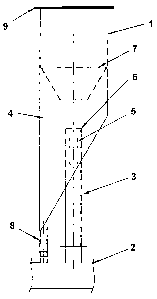Some of the information on this Web page has been provided by external sources. The Government of Canada is not responsible for the accuracy, reliability or currency of the information supplied by external sources. Users wishing to rely upon this information should consult directly with the source of the information. Content provided by external sources is not subject to official languages, privacy and accessibility requirements.
Any discrepancies in the text and image of the Claims and Abstract are due to differing posting times. Text of the Claims and Abstract are posted:
| (12) Patent: | (11) CA 2177885 |
|---|---|
| (54) English Title: | AIR ESCAPING MEANS |
| (54) French Title: | MOYEN DE DESAERATION |
| Status: | Term Expired - Post Grant Beyond Limit |
| (51) International Patent Classification (IPC): |
|
|---|---|
| (72) Inventors : |
|
| (73) Owners : |
|
| (71) Applicants : |
|
| (74) Agent: | SMART & BIGGAR LP |
| (74) Associate agent: | |
| (45) Issued: | 2006-07-18 |
| (22) Filed Date: | 1996-05-31 |
| (41) Open to Public Inspection: | 1996-12-03 |
| Examination requested: | 2003-01-23 |
| Availability of licence: | N/A |
| Dedicated to the Public: | N/A |
| (25) Language of filing: | English |
| Patent Cooperation Treaty (PCT): | No |
|---|
| (30) Application Priority Data: | ||||||
|---|---|---|---|---|---|---|
|
A de-aeration device for the separation of solid particles from a gas, comprising a container with an inlet for the supply of the gas contaminated with particles and an outlet for the purified gas. The cross-section of the container (4) is dimensioned in such a way that the gas velocity does not exceed the carrying velocity of the particles, that the gas flow is deflected at the inlet so that it flows mainly sideways in relation to the direction of through-flow of the container and that the outlet of the container (4) is provided with a filter cloth (9).
Un dispositif de désaération pour la séparation des particules solides provenant d'un gaz, comprenant un conteneur avec une entrée pour le gaz contaminé avec des particules et une sortie pour le gaz purifié. Les dimensions de la section transversale du conteneur (4) ont été conçues de telle sorte que la vitesse du gaz ne dépasse pas la vitesse de transport des particules, que le débit de gaz soit dévié à l'entrée afin qu'il s'écoule principalement sur le côté par rapport à la direction de circulation à l'intérieur du conteneur et que la sortie du conteneur (4) soit équipée d'un tissu filtrant (9).
Note: Claims are shown in the official language in which they were submitted.
Note: Descriptions are shown in the official language in which they were submitted.

2024-08-01:As part of the Next Generation Patents (NGP) transition, the Canadian Patents Database (CPD) now contains a more detailed Event History, which replicates the Event Log of our new back-office solution.
Please note that "Inactive:" events refers to events no longer in use in our new back-office solution.
For a clearer understanding of the status of the application/patent presented on this page, the site Disclaimer , as well as the definitions for Patent , Event History , Maintenance Fee and Payment History should be consulted.
| Description | Date |
|---|---|
| Inactive: IPC removed | 2022-06-19 |
| Inactive: First IPC assigned | 2022-06-19 |
| Inactive: IPC expired | 2022-01-01 |
| Inactive: Expired (new Act pat) | 2016-05-31 |
| Grant by Issuance | 2006-07-18 |
| Inactive: Cover page published | 2006-07-17 |
| Pre-grant | 2006-05-08 |
| Inactive: Final fee received | 2006-05-08 |
| Notice of Allowance is Issued | 2005-12-19 |
| Notice of Allowance is Issued | 2005-12-19 |
| Letter Sent | 2005-12-19 |
| Inactive: Approved for allowance (AFA) | 2005-09-07 |
| Amendment Received - Voluntary Amendment | 2005-07-12 |
| Inactive: S.30(2) Rules - Examiner requisition | 2005-01-12 |
| Amendment Received - Voluntary Amendment | 2003-02-21 |
| Inactive: Application prosecuted on TS as of Log entry date | 2003-02-04 |
| Letter Sent | 2003-02-04 |
| Inactive: Status info is complete as of Log entry date | 2003-02-04 |
| Request for Examination Requirements Determined Compliant | 2003-01-23 |
| All Requirements for Examination Determined Compliant | 2003-01-23 |
| Application Published (Open to Public Inspection) | 1996-12-03 |
There is no abandonment history.
The last payment was received on 2006-04-06
Note : If the full payment has not been received on or before the date indicated, a further fee may be required which may be one of the following
Please refer to the CIPO Patent Fees web page to see all current fee amounts.
Note: Records showing the ownership history in alphabetical order.
| Current Owners on Record |
|---|
| NORSK HYDRO A.S. |
| Past Owners on Record |
|---|
| MORTEN KARLSEN |
| ROBERT SANDVIK |